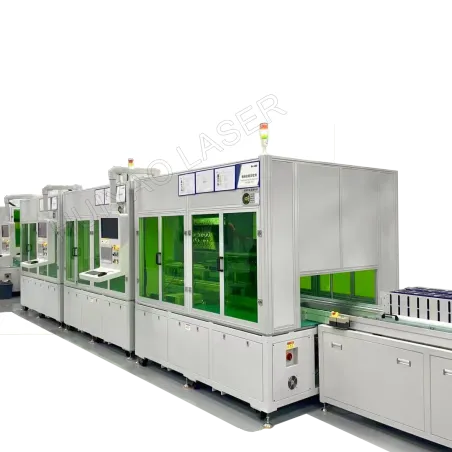What is the cost of setting up a lithium battery module pack assembly line?
In the ever-evolving landscape of renewable energy, lithium batteries stand out as a cornerstone technology, powering everything from electric vehicles to grid-scale energy storage systems. As the demand for lithium batteries continues to soar, establishing efficient assembly lines becomes paramount. In this comprehensive guide, we delve into the intricate details of setting up a lithium battery module pack assembly line, uncovering the costs involved and the factors influencing them.

Factors Influencing Costs
1. Scale of Production
The scale of production plays a pivotal role in determining the cost of setting up a lithium battery module pack assembly line. Larger assembly lines typically benefit from economies of scale, allowing for bulk purchases of raw materials and streamlined manufacturing processes. Conversely, smaller-scale operations may incur higher per-unit costs, as overhead expenses are distributed across fewer units.
2. Automation Level
Automation revolutionizes manufacturing by enhancing efficiency and reducing labor costs. High levels of automation in assembly lines significantly impact initial setup costs but can lead to substantial long-term savings through increased productivity and reduced error rates. Integrating automated machinery for processes such as cell stacking, welding, and testing can optimize production and minimize manual intervention.
3. Technology and Equipment
Investing in state-of-the-art technology and equipment is essential for ensuring the reliability and efficiency of a lithium battery assembly line. Advanced machinery, such as precision welding systems and automated sorting equipment, may command higher upfront costs but can deliver superior quality and throughput, ultimately driving down per-unit costs over time.
4. Facility Requirements
The cost of setting up a lithium battery module pack assembly line is heavily influenced by facility requirements. Factors such as facility size, infrastructure upgrades, and compliance with safety regulations contribute to the overall cost. Designing a layout that optimizes workflow and maximizes space utilization is crucial for minimizing costs and maximizing productivity.
5. Supply Chain Management
Efficient supply chain management is indispensable for minimizing costs and ensuring uninterrupted production. Establishing strategic partnerships with suppliers of raw materials, components, and equipment can lead to negotiated pricing and favorable terms. Additionally, implementing robust inventory management systems helps prevent stockouts and minimizes carrying costs.
Breakdown of Costs
Equipment Costs
The largest component of cost in setting up a Lithium Battery Production Line is equipment acquisition. This includes machinery for cell assembly, welding, testing, and packaging. Depending on the desired level of automation and throughput capacity, equipment costs can range from tens of thousands to millions of dollars.
Raw Materials
Raw materials account for a significant portion of the cost structure, encompassing lithium-ion cells, electrolytes, separators, and casing materials. Prices of raw materials fluctuate based on market demand and supply dynamics, making effective procurement strategies essential for cost containment.
Labor Costs
Labor costs include wages for skilled technicians, engineers, and operators involved in the assembly line operation. While automation can mitigate the need for extensive manual labor, skilled personnel are still required for equipment maintenance, quality control, and process optimization.
Facility Expenses
Facility expenses encompass the cost of leasing or purchasing the production space, as well as utilities, maintenance, and insurance. Investing in energy-efficient infrastructure and implementing waste reduction measures can contribute to long-term cost savings and environmental sustainability.
Regulatory Compliance
Compliance with regulatory standards and safety protocols is non-negotiable in the battery manufacturing industry. Budgeting for regulatory compliance activities, such as testing, certification, and ongoing audits, is essential for avoiding costly penalties and ensuring consumer confidence.
Conclusion
Setting up a lithium EV battery module pack assembly line entails meticulous planning, strategic investment, and a deep understanding of the myriad factors influencing costs. By optimizing production processes, leveraging automation, and fostering strong supply chain partnerships, manufacturers can navigate the complexities of the industry and establish competitive assembly lines capable of meeting the growing demand for lithium batteries.
180
0
0


Comments
All Comments (0)